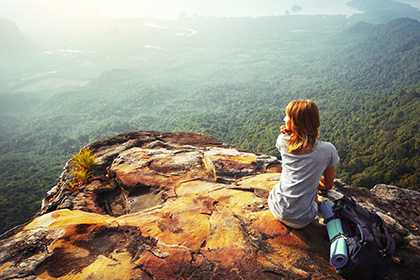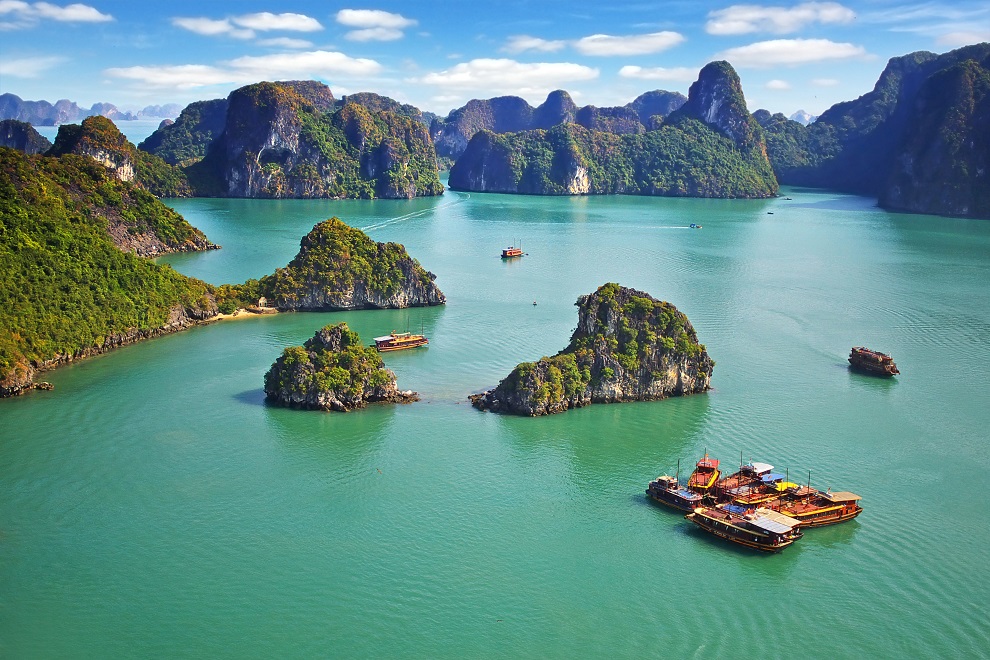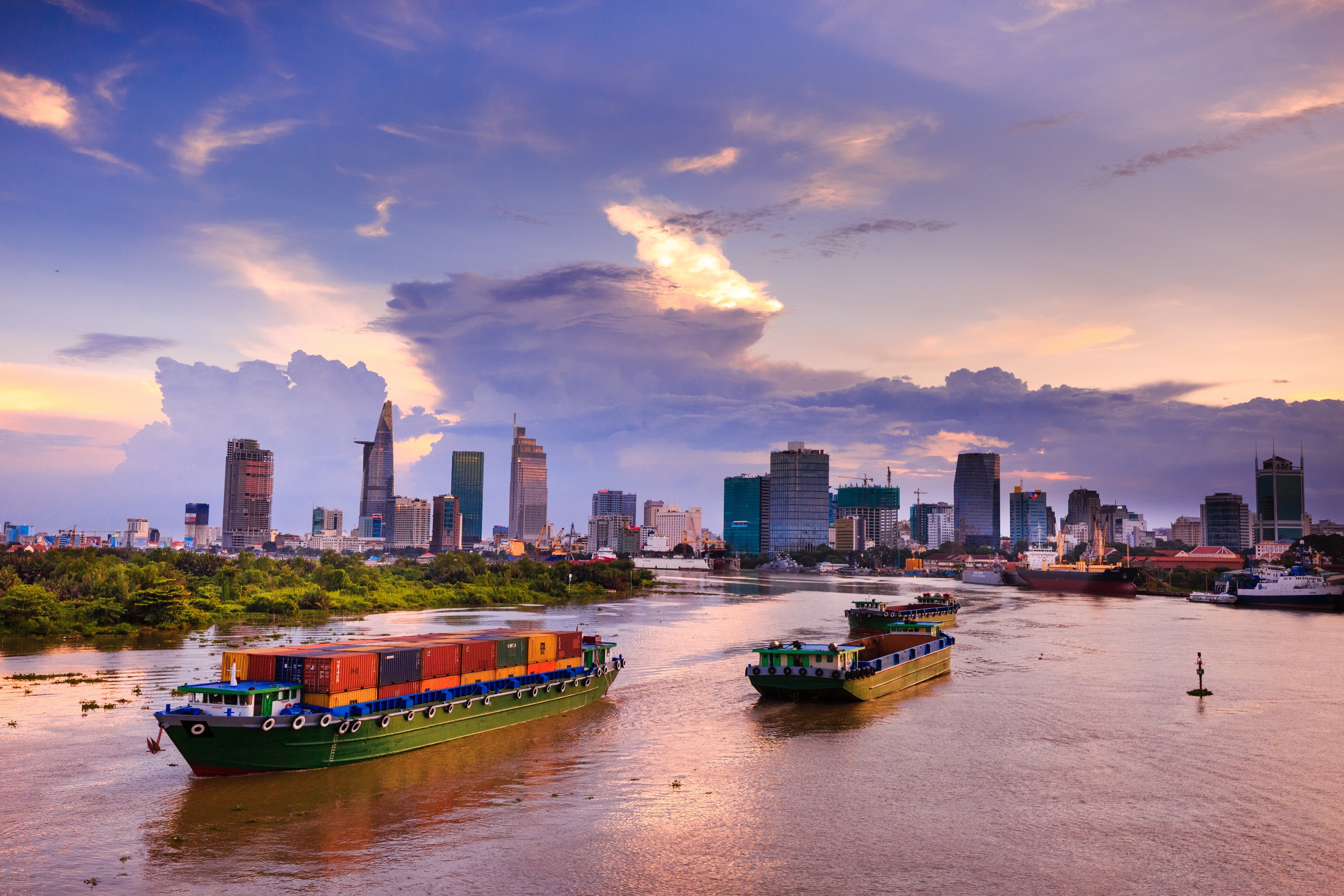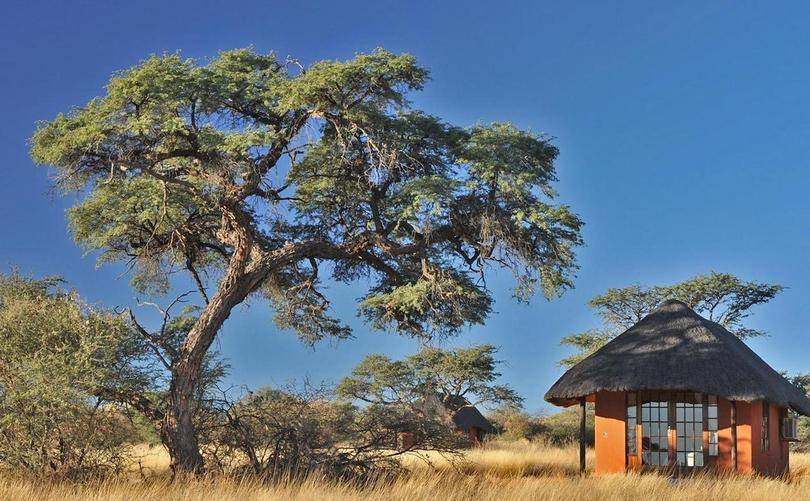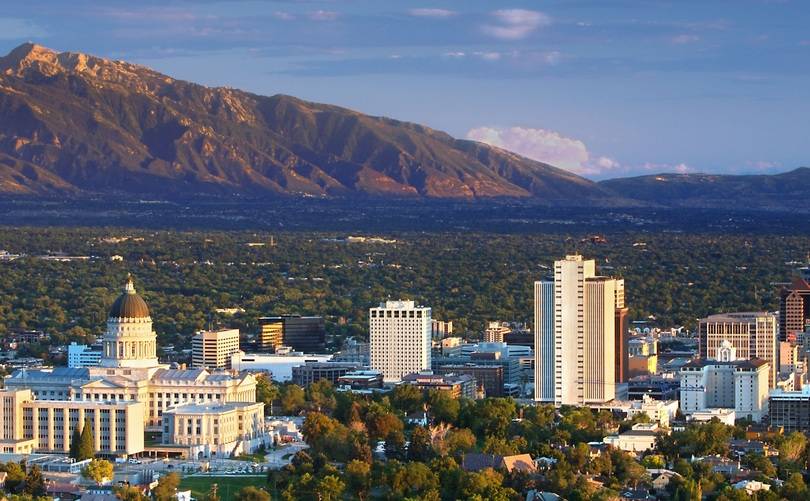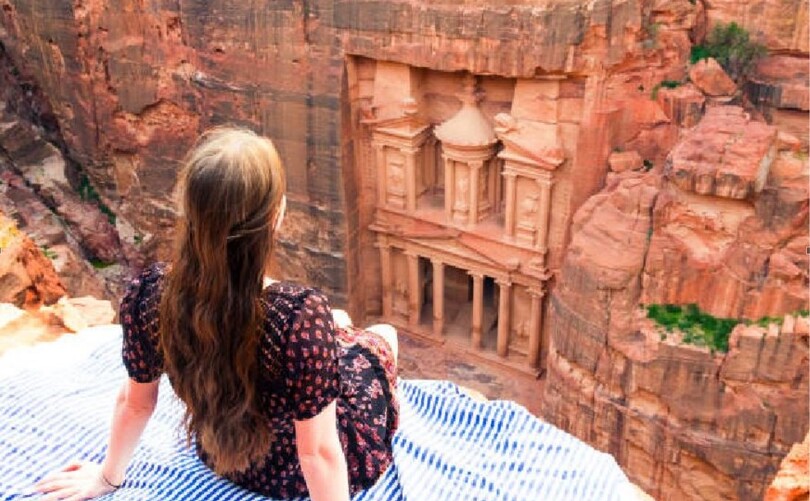
Best of Vietnam & Cambodia (11 Days/10 Nights)
Hanoi
10 nights highlights of Vietnam and Cambodia - dip your toes in the highlights of Vietnam and Cambodia
Highlights
- Hanoi - Visit Hanoi's illustrious history
- Ha Long Bay - Cruise among hundreds of islets while enjoying lunch
- Ho Chi Minh City - Learn about the history of Vietnam
- Mekong - Observe the lively activities of local merchants from laden vessels
- Siem Reap - Explore the ancient city and temples
- Day 1 - Hanoi – Arrival
- Day 2 - Hanoi – Sightseeing
- Day 3 - Hanoi – Ha Long Bay
- Day 4 - Ha Long Bay – Boat Cruise – Hanoi – Ho Chi Minh City
- Day 5 - Ho Chi Minh City – Cu Chi Tunnels – Sightseeing
- Day 6 - Ho Chi Minh City - Cai Be - Tra On
- Day 7 - Tra On - Cai Rang Floating market – Ho Chi Minh City
- Day 8 - Ho Chi Minh City - Siem Reap
- Day 9 - Siem Reap - Angkor Complex
- Day 10 - Siem Reap – Banteay Srei – Banteay Samre – Ta Prohm – Visit Local Monastery for Blessing Ceremony
- Day 11 - Siem Reap - Departure
- Additional Information
Day 1: Hanoi - Arrival
Arrive in Hanoi and transfer to your hotel. The rest of the day is at your leisure. Overnight in Hanoi.
La Belle Vie Hotel Hanoi
Property Location A stay at La Belle Vie Hotel Hanoi places you in the heart of Hanoi, convenient to Hanoi Citadel and Hoan Kiem Lake. This 4-star hotel is within the vicinity of Vietnam National Convention Center.
Day 2: Hanoi - Sightseeing
You will have a full day to explore Hanoi’s illustrious history. In the morning, visit the imposing marble edifice housing the Ho Chi Minh mausoleum (CLOSED ON MONDAYS and FRIDAYS) before moving onto his wooden stilt house and the One Pillar Pagoda. You will then explore the first university of Vietnam, the Temple of Literature, which is imbued with the profound philosophies of Confucianism. In the afternoon, visit the Hoan Kiem Lake, the Ngoc Son Temple and an ancient Vietnamese "long house. "A one-hour cyclo tour of Hanoi’s Old Quarter allows you to catch a glimpse of ancient Hanoi and learn about traditional Vietnamese architecture.
Overnight in Hanoi [Breakfast]
La Belle Vie Hotel Hanoi
Property Location A stay at La Belle Vie Hotel Hanoi places you in the heart of Hanoi, convenient to Hanoi Citadel and Hoan Kiem Lake. This 4-star hotel is within the vicinity of Vietnam National Convention Center.
HO CHI MINH MAUSOLEUM IN HANOI
Ho Chi Minh Mausoleum in Ba Dinh Square is one of the most visited attractions in Hanoi. It is the final resting place of Ho Chi Minh, the most iconic and popular leader of Vietnam, known to his people as ‘Uncle Ho’. His body is preserved here in a glass case at the Ho Chi Minh Mausoleum in central Hanoi (albeit against his wishes).
For visitors, a trip to Uncle Ho’s final resting place can be an extraordinary experience as it is not just an average attraction; it’s a part of a unique history.
HOAN KIEM LAKE & NGOC SON TEMPLE IN HANOI
Hanoi tourists and locals alike head to Hoan Kiem Lake when seeking a place to get away from the noise of the city. Peaceful and quiet, the lake surrounds Ngoc Son Temple, a pagoda sitting in the centre on a small island.
The temple attracts many visitors and was built in commemoration of the 13th century military leader Tran Hung Dao who was renowned for his bravery in the battle against the Yuan Dynasty.
Homage is also paid to scholar Van Xuong and Confucian master Nguyen Van Sieu. The island on which the temple is built is known as Jade Island and is accessible by the iconic Huc Bridge or Rising Sun Bridge which is a charming scarlet-painted wooden bridge of classical Vietnamese design. The pagoda is also guarded by two towering posts decorated with Chinese writing. The lake and temple are probably the most famous places in Hanoi city in which to rest and enjoy the view and are a great place to sit back and watch the locals.
HANOI OLD QUARTER
Hanoi, Vietnam’s capital lies in the North of the country and is one of the country’s top tourist hot spots. It offers French-colonial architecture, a rich food culture and a long history (the city celebrated its millennium in 2010.) The most well known and important districts in Hanoi are Ba Dinh District (aka the French Quarter) where the government offices are located and Hoan Kiem District (aka the Old Quarter) which is considered the city’s business hub and main tourist destination.
One of Hanoi’s most common sights is that of streets packed with scooters, bicycles and cars swarming around pedestrians like a school of fish. Then there are the many sidewalk vendors and people simply out for a stroll and the popular Old Quarter is no exception so walking around this district is distinct from a leisurely stroll in the park. Visitors have no choice but to face the traffic in the local style but the experience of exploring the historical area is a must-do and truly well worth it.
TEMPLE OF LITERATURE IN HANOI
The Temple of Literature is often cited as one of Hanoi’s most picturesque tourist attractions. Originally built as a university in 1070 dedicated to Confucius, scholars and sages, the building is extremely well preserved and is a superb example of traditional-style Vietnamese architecture.
This ancient site offers a lake of literature, the Well of Heavenly Clarity, turtle steles, pavilions, courtyards and passageways that were once used by royalty. Visiting the Temple of Literature you will discover historic buildings from the Ly and Tran dynasties in a revered place that has seen thousands of doctors’ graduate in what has now become a memorial to education and literature.
Originally the university only accepted aristocrats, the elite and royal family members as students before eventually opening its doors to brighter ‘commoners’. Successful graduates had their names engraved on a stone stele which can be found on top of the stone turtles.
Day 3: Hanoi - Ha Long Bay
Drive through rice paddy fields to Ha Long Bay. Board a junk for a cruise among hundreds of islets of Ha Long Bay while enjoying lunch. Drop anchor in the late evening for an overnight stay among the dramatic limestone peaks rising out of the sea.
Overnight on a Junk [Breakfast, Lunch, Dinner]
Halong Glory Legend Cruise
Property Location This vessel pulls anchor and sets sail from Halong for at least part of your stay.
Day 4: Ha Long Bay - Boat Cruise - Hanoi - Ho Chi Minh City
Spend the morning cruising through the limestone cliffs and emerald waters of Ha Long Bay before returning to the wharf area. Transfer to Noi Bai Airport for your flight to Ho Chi Minh City. Upon arrival, transfer to hotel.
Overnight in Ho Chi Minh City [Breakfast]
Huong Sen Annex Hotel
Huong Sen Annex Hotel, Near Ben Thanh Market
Day 5: Ho Chi Minh City - Cu Chi Tunnels - Sightseeing
This morning you will visit the amazing Cu Chi Tunnels where Vietnamese guerrillas built a labyrinth of narrow tunnels as hideouts during the war. Return to Ho Chi Minh City in the afternoon for a half-day city tour. Highlights include the photo stops at the Reunification Palace, the Notre Dame Cathedral, the Central Post Office. Visit a local market in Chinatown and either the Thien Hau Temple or the Quan Am Pagoda.
Overnight in Ho Chi Minh City [Breakfast]
Huong Sen Annex Hotel
Huong Sen Annex Hotel, Near Ben Thanh Market
CU CHI TUNNELS IN HO CHI MINH
The Cu Chi Tunnels are basically a huge war museum offering visitors a sneak peak at the underground life of Viet Cong-era soldiers. Comprising more than 120km of tunnels, they were first started around 1948 when the Viet Cong were fighting the French.
Nowadays, the restored tunnels are one of Vietnam’s top attractions and are especially popular with non-Vietnamese tourists. People follow the routes of the underground army and before entering the tunnels visitors will have the chance to watch a short movie and get to understand beforehand how this unusual tunnel system actually works.
CENTRAL POST OFFICE IN HO CHI MINH CITY
The Central Post Office in Ho Chi Minh is a beautifully preserved remnant of French colonial times and perhaps the grandest post office in all of Southeast Asia. Located next door to Notre Dame Cathedral, the two cultural sites can be visited together and offers visitors a chance to imagine life in Vietnam during the times of the Indochinese Empire. The building was designed by Gustave Eiffel – the renowned engineer who also designed the Statue of Liberty and the Eiffel Tower – and features arched windows and wooden shutters, just as it would have in its heyday in the late 19th Century.
The Central Post Office in Ho Chi Minh was constructed between 1886 and 1891 and once inside, the looping arches, intricately designed marble floors and antiquated telephone boxes all serve as a reminder of the importance the post office played in days before email and mobile phones. Although the architecture is distinctly French, the large portrait of Ho Chi Minh hanging high above everyone at the far end of the building reminds everyone we are definitely in Vietnam. Painted onto walls overhead are two maps of the region; one of them showing the telegraph lines that crisscross Vietnam and Cambodia and the other displaying a map of the Saigon region in 1892.
Although the experience is a fascinating glimpse into history, the fact that this is still a functioning post office makes the experience even sweeter, and we encourage everyone to send a letter or postcard from here – it’s a piece of living history where even the old fashioned glue pots are still in use for sticking stamps to letters. There are two wings branching out from the main office, selling souvenirs, postcards and lacquerware but the prices are inflated and the same products can probably be found elsewhere for a better price.
NOTRE DAME CATHEDRAL IN HO CHI MINH
In a quiet corner of bustling downtown Ho Chi Minh City stands Notre Dame Cathedral, the one remaining stronghold of Catholicism in the largely Buddhist Vietnam. Built in the late 1880s by French colonists, it was formerly called Saigon Church. The name Notre Dame was given after the installation of the statue ‘Peaceful Notre Dame’ in 1959. In 1962, the Vatican conferred the Cathedral status as a basilica and gave it the official name of Saigon Notre Dame Cathedral Basilica.
In a quiet corner of bustling downtown Ho Chi Minh City stands Notre Dame Cathedral, the one remaining stronghold of Catholicism in the largely Buddhist Vietnam.
Built in the late 1880s by French colonists, it was formerly called Saigon Church. The name Notre Dame was given after the installation of the statue ‘Peaceful Notre Dame’ in 1959. In 1962, the Vatican conferred the Cathedral status as a basilica and gave it the official name of Saigon Notre Dame Cathedral Basilica.
REUNIFICATION PALACE IN HO CHI MINH
The iconic Reunification Palace made its name in global history when in 1975 a tank belonging to the North Vietnamese Army crashed through its main gate – thus signifying the end of the Vietnam War. This image is one of the most famous pictures depicting the Reunification Palace which has seen a rich and varied history and once served as the base of the US-backed Vietnamese General Ngo Dinh Diem during the Vietnam War, until his assassination in 1963.
The palace is like a time capsule frozen in 1975 with two of the original tanks used in the capture of the palace parked in the grounds. Originally the site of the Nordom Palace also known as the Governor’s Palace its first role was as a home and workplace for the then French Governor of Cochinchina. The Reunification Palace is a landmark not to be missed by any tourist visiting Ho Chi Minh City. Surrounded by lush tropical gardens, the palace hides secret rooms, antique furniture and a command bunker within its eerie corridors. The Reunification Palace is still in use to host occasions including APEC summits and national events of significant importance.
Day 6: Ho Chi Minh City - Cai Be - Tra On
Drive to Cai Be and take a boat cruise to the Cai Be area. You will have a chance to observe the lively activities of local merchants trading their produce from laden vessels. Visit a village where you will see some family run businesses that make rice cake and rice paper. Board the riverboat Bassac and cruise to Cho Lach. Have lunch onboard while cruising on the waterways with a stop for a brief guided tour around riverside villages. Drop anchor at Tra On for an overnight stay onboard.
Overnight onboard the Bassac. [Lunch, Dinner]
Bassac Cruise
The beautifully crafted Bassac boats offer various journeys of one or two night cruises, beginning a couple of hours drive from Saigon. This is by far the best way to see this fascinating and inaccessible region of Southern Vietnam's Mekong Delta. The boat trip offers the opportunity to enjoy the stunning scenery through the Cho Gao canal, board a smaller rowing boat to get closer to local villages, and maybe the highlight, experience the floating markets of Cai Be.
Day 7: Tra On - Cai Rang Floating Market - Ho Chi Minh City
Early in the morning, leave Tra On and cruise to Can Tho City. On arrival, explore the colourful and bustling floating market at Cai Rang before disembarking at Can Tho Pier. Drive back to Ho Chi Minh City.
Overnight in Ho Chi Minh City. [Breakfast]
Huong Sen Annex Hotel
Huong Sen Annex Hotel, Near Ben Thanh Market
Day 8: Ho Chi Minh City - Siem Reap
Transfer to the airport for your flight to Siem Reap. Upon your arrival, transfer to your hotel. In the afternoon, explore Khmer temples from the early Angkorian period. Visit the Roluos group of temples dating from the 9th and 10th centuries including Preah Ko, Bakong and Lolei Temples. Return to your hotel in the early evening.
Overnight in Siem Reap. [Breakfast]
Treasure Oasis Hotel
With a prime location in the heart of the city's central district, Treasure Oasis offers top class accommodation and exceptional dining options for visitors to Siem Reap.The colonial-style design and traditional Khmer ornaments enhance their guests' experience of the captivating architecture and showcase the refined culture of Cambodia.The hotel welcomes you to a secluded paradise, steeped in rich cultural tradition and filled with warm Khmer hospitality.
The Temples of Angkor
With the capital of the Khmer Empire being situated at Angkor for some 500 years, there are a wealth of ancient temples and other sites near Siem Reap Town. Most of these sites are in and around the Angkor Archaeological Park. The largest and most significant ruins of the Angkorian Empire are found just to the north of the municipality of Siem Reap, and thus has grown into a tourist oriented town. It is the base from which most visitors explore the temples of Angkor.
The ruins and restored sites in the Angkor Archaeological Park is a UNESCO World Heritage site, and form part of the largest pre-industrial city in the world.
Depending on how you count them, there are some 50 Hindi and Buddhist temples and other sites near Siem Reap, with another 10 major sites further away.
Unfortunately, due to the ravages of time and conflicts, some sites are ruined and not in good condition, but even these crumbling sites are fascinating to visit, and provide a glimpse into the distant past. We have provided descriptions of some the more important sites you may wish to visit.
Day 9: Siem Reap - Angkor Complex
Enter Angkor Thom via the Southern Gate and explore the ancient city, then proceed to visit the ruins at Bayon, Baphoun, Phimeanakas, the Royal Palace, the Elephant Terrace and the Leper King Terrace. In the afternoon, visit the epic Angkor Wat, viewing its extraordinary architecture and bas-reliefs. After that, you have an option to enjoy the late afternoon in Angkor Wat temple, which is illuminated beautifully by he setting sun.
Overnight in Siem Reap. [Breakfast]
Treasure Oasis Hotel
With a prime location in the heart of the city's central district, Treasure Oasis offers top class accommodation and exceptional dining options for visitors to Siem Reap.The colonial-style design and traditional Khmer ornaments enhance their guests' experience of the captivating architecture and showcase the refined culture of Cambodia.The hotel welcomes you to a secluded paradise, steeped in rich cultural tradition and filled with warm Khmer hospitality.
Angkor Wat
There are few places anywhere on earth to match the splendour of Angkor Wat. The temple is one of the largest monuments to religion ever built and is truly one the wonders of the world. Believed to have been constructed as a temple and mausoleum for King Suryavarman II at the peak of the Khmer empire in the first half of the 12th century, Angkor Wat is probably the best-preserved of the Angkorean temples. As with other Angkorean temples and walled cities such as Angkor Thom, the central theme of Khmer architecture revolved around the idea of the temple-mountain.
By the time building on Angkor Wat was begun early in the 12th century, this had been elaborated to a central tower surrounded by four smaller towers. The central monument represents the mythical Mount Meru, the holy mountain at the centre of the universe, which was home to the Hindu god Vishnu. The five towers symbolise Mount Meru's five peaks. It is difficult to express in words the enormous scale of Angkor Wat, but it can be explained in part by a look at the dimensions of the complex. The temple is surrounded by a moat which makes the one around the Tower of London, built at roughly the same time, look like nothing more than a garden trench.
At 190 metres wide and forming a rectangle measuring 1.5 km by 1.3 km, it is hard to imagine any attacking force overwhelming the defences. But the moat was more than just a defensive bulwark, in line with the temple's Hindu origins it represented the oceans of the world. A rectangular wall measuring 1025 metres by 800 metres borders the inner edge of the moat. There is a gate in each side of the wall, but unusually for the mainly Hindu-influenced Angkorian temples, the main entrance faces west. This entrance is a richly decorated portico, 235 m wide with three gates. However, the temple's greatest sculptural treasure is its 2 km-long bas-reliefs around the walls of the outer gallery and the hundred figures of devatas and apsaras. This intricately carved gallery tells stories of the god Vishnu and of Suryavarman II's successes on the battlefield. The whole complex covers 81 hectares.
Bayon & Ta Prohm Temples
Aside from Angkor Wat, Ta Prohm and Bayon may be the best known and most photographed of the “other” temples. Ta Prohm is popular because of its lost temple in the jungle atmosphere, overgrown with trees and vines, and Bayon is famous for its huge enigmatic, carved stone faces.
The Bayon Temple is the dominant feature inside the walled city of Angkor Thom, and Ta Prohm is not far outside the Victory Gate of Angkor Thom. Both are Buddhist temples, and were constructed by King Jayavarman VII; Bayon in the late 12th century, and Ta Prohm from the mid 12th century to the early 13th century. These two magnificent examples of Angkor temple architecture should not be missed. See below for details of these two ancient structures.
Day 10: Siem Reap - Banteay Srei - Banteay Samre - Ta Prohm - Visit Local Monastery for Blessing Ceremony
After breakfast, visit the graceful 11th century Temple of Shiva – Banteay Srei – and the Banteay Samre Temple. On the way back, swing by the Ta Prohm Temple which is mystically enveloped in the jungle. In the afternoon, we drive to a local monastery and meet the resident monks and participate in a private good luck blessing ceremony and wishing you good health and a safe journey, performed by local monks. Sit on the mat while the monks chant blessings and sprinkle holy water on you – a traditional way which is believed pass on the good luck of the gods. Afterwards, a sacred thread will be tied around your wrist. This will protect you from any evil spirits or accidents – a memorable experience!
Overnight in Siem Reap. [Breakfast]
Treasure Oasis Hotel
With a prime location in the heart of the city's central district, Treasure Oasis offers top class accommodation and exceptional dining options for visitors to Siem Reap.The colonial-style design and traditional Khmer ornaments enhance their guests' experience of the captivating architecture and showcase the refined culture of Cambodia.The hotel welcomes you to a secluded paradise, steeped in rich cultural tradition and filled with warm Khmer hospitality.
Day 11: Siem Reap - Departure
Free until transfer to the airport for departure flight.
[Breakfast]
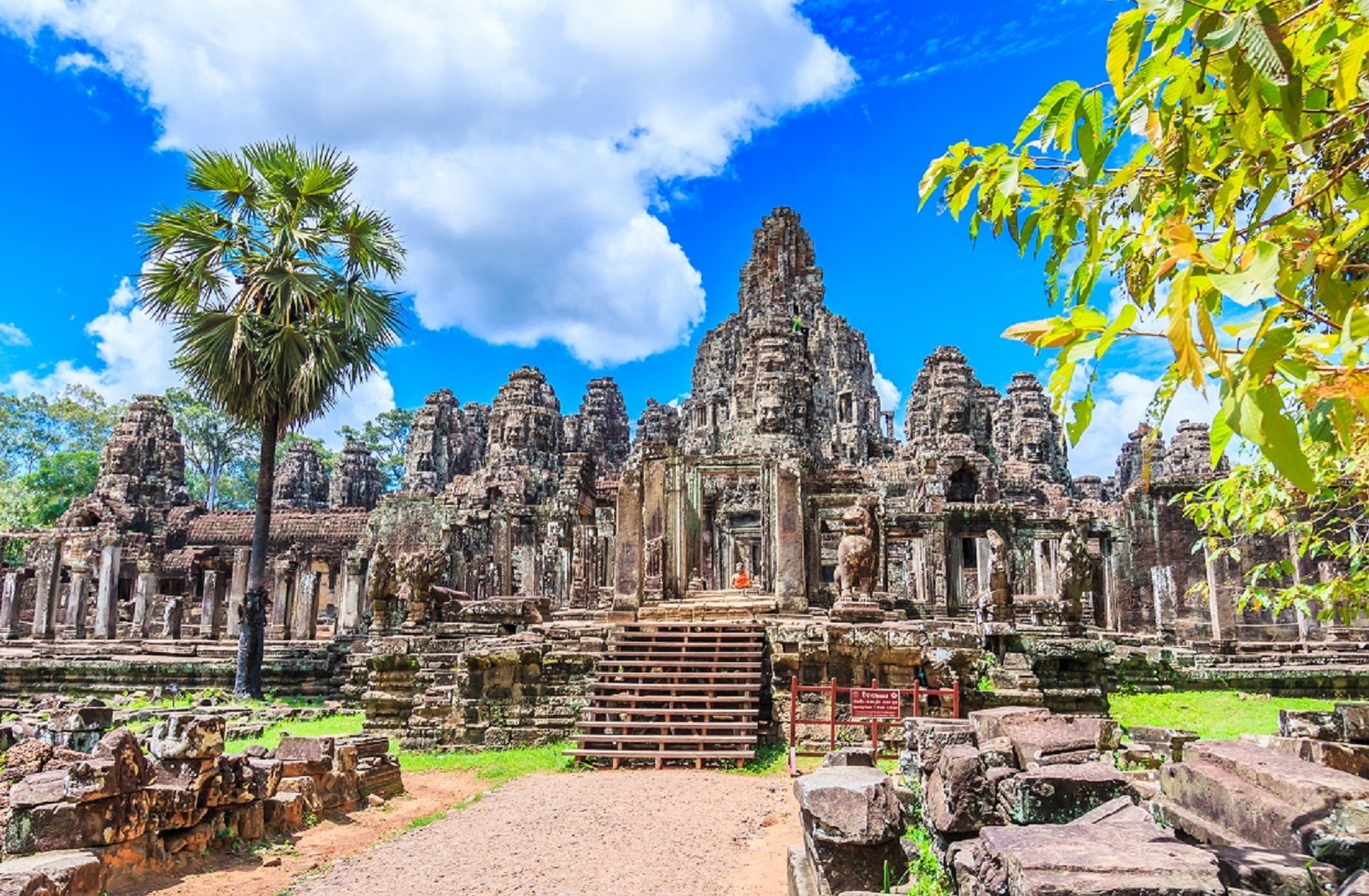
Please note:
- Junks in Halong may be delayed or cancelled due to weather condition without prior notice
- Hotel surcharge for peak season may be added to your booking and will be re-confirmed with you at the time of booking
- Compulsory meals during Christmas, New Years, Peak Seasons are not included and must be added if you are travelling over these dates
Inclusions in your tour:
- Vietnam visa approval number processing fee
- Accommodation & daily breakfast
- Transportation on tour in air-conditioned vehicles
- Local English speaking guides
- Entrance fees for all sight-seeing tours as specified in the itinerary
- Meals as specified in the itinerary
- Bottled water for sightseeing tours
- International air ticket reconfirmation
Exclusions in your tour:
- Vietnam visa stamping fee
- Cambodia, Laos, Thailand, Myanmar visa (where applicable)
- International airfares
- Beverages during included meals
- All personal expenses
- Personal insurance
- Gratuities for guide, driver, waiter/waitress, bell boy, boat crew etc.
- All other services not mentioned in the itinerary





